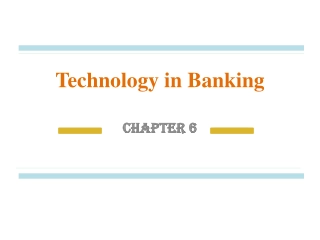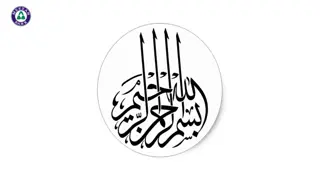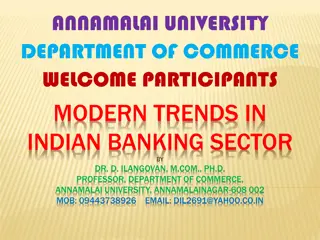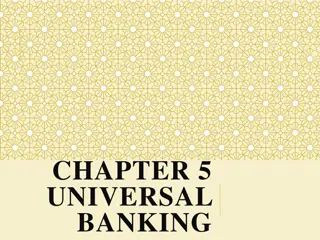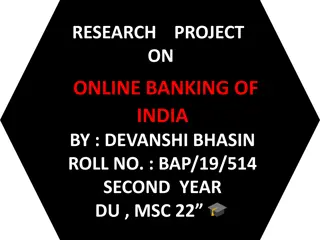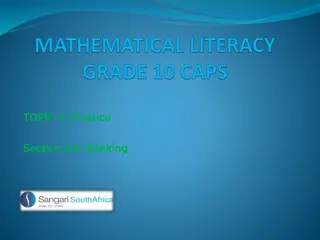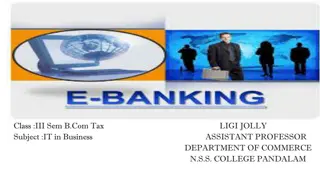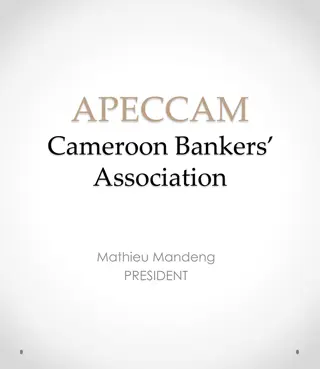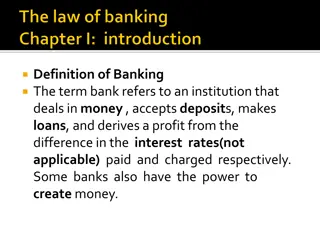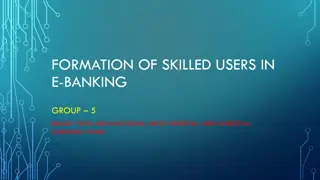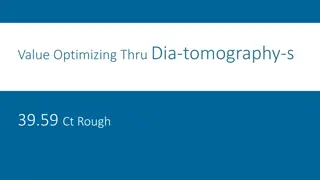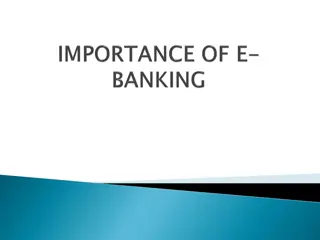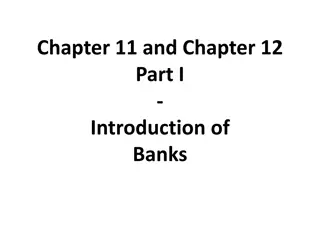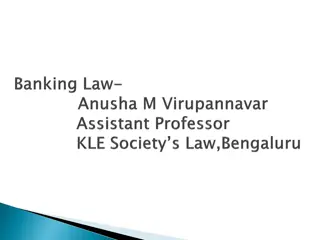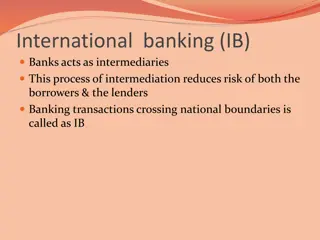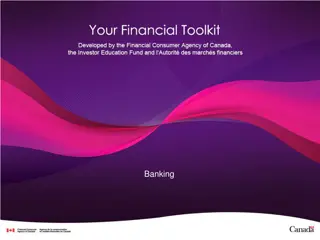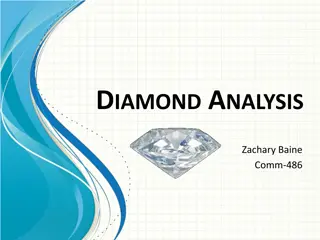Understanding the Diamond-Dybvig Model in Banking
The Diamond-Dybvig Model, developed by Douglas Diamond and Philip Dybvig, is a fundamental framework in banking research. It explores the dynamics between business investments and individual demands for liquid accounts, emphasizing the role of banks as intermediaries. Learn how this model addresses financial market phenomena and the implications it has on fund pooling, long-term investments, and liquidity management.
Download Presentation

Please find below an Image/Link to download the presentation.
The content on the website is provided AS IS for your information and personal use only. It may not be sold, licensed, or shared on other websites without obtaining consent from the author.If you encounter any issues during the download, it is possible that the publisher has removed the file from their server.
You are allowed to download the files provided on this website for personal or commercial use, subject to the condition that they are used lawfully. All files are the property of their respective owners.
The content on the website is provided AS IS for your information and personal use only. It may not be sold, licensed, or shared on other websites without obtaining consent from the author.
E N D
Presentation Transcript
African Regional Centre for Space Science and Technology Education- in French Language CRASTE-LF affiliated to UN The role of the UN-affiliated Regional Centres CRASTE-LF : Missions & Achievements By Anas EMRAN Director of CRASTE-LF CRASTE-LF: Sis EMI, Avenue Ibn Sina, BP 765, Agdal - Rabat (Morocco) - Phone: +212 537 68 18 26 Fax : +212 537 68 18 24 Email : craste@emi.ac.ma - www.crastelf.org.ma
The CRASTE-LF is one of 6 Regional Centres affiliated to UN Juin 2017 CRASTE-LF Morocco 1998) ARCESSTE-E Nigeria (1998) Alliance of Regional centres http://www.unoosa.org/oosa/en/ourwork/psa/regional-centres/index.html
Objectives of the CRASTE-LF CB in Space Sciences and Technologies by organizing : g Postgraduate Training courses /Master degree - Remote Sensing & GIS - 15 sessions / 282 trainees - Satellite Meteorology & Global Climate - 7 sessions / 70 trainees - Satellite Communications - 3 sessions / 38 trainees - GNSS - 5 sessions / 54 trainees - Space and Atmospheric Science - Space Law Short courses, Seminars, Workshops and Conferences + 70 activities in space technologies (Short courses, Seminars, Workshops and Conferences) Climate change - Water resources Agriculture Health - Microsatellite technologies - Biodiversity Drought Disasters GNSS etc..
Cooperation - - - - - UNOOSA & ARC Regional and International organisations Kingdom of Morocco (AMCI, ONOUSC , Moroccan Institutions National organisations and institutions Member of several international projects in space sciences. Dissemination Conclusion Africa needs to strengthen its capacities in all areas of space science and technologies. For this the CRASTE-LF has decided: 1. to adapt its curriculum to new technological advances 2. to align the training offer with the immediate need for African administrations, and the flow of spatial data available and its processing at different scales. 3. to diversify its training and introduced eLearning training courses. 4


